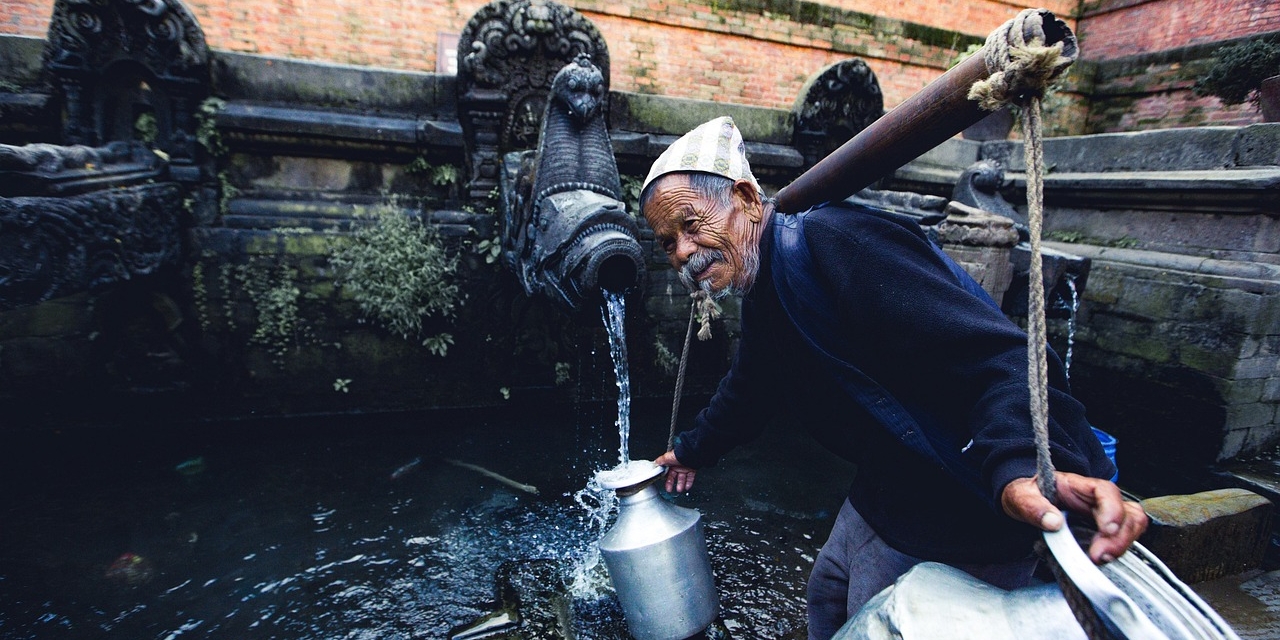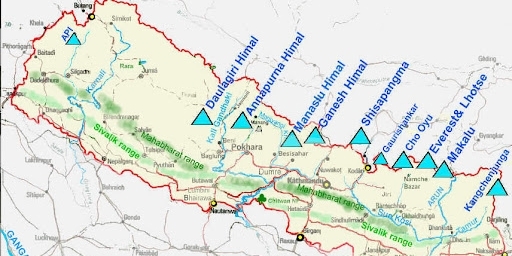WHY NEPAL IS THE MOST FASCINATING AND PERFECT HOLIDAY DESTINATION FOR EVERYONE?


Why Foreign Scholars Choose Nepal as a Research Destination
Nepal, a culturally
rich and ecologically diverse country perched in the lap of the Himalayas, is
increasingly being recognized as one of the most promising destinations for
academic and scientific research. Though small in geographic size, Nepal is
remarkably vast in what it offers: unparalleled ethnic and linguistic
diversity, extreme altitude variations, spiritual depth, and geophysical
activity that draws attention from disciplines as varied as anthropology,
seismology, ecology, climate change and many more. For foreign researchers
seeking both intellectual stimulation and meaningful field experiences, Nepal
stands as an open, fertile, and accessible research sites combined with
adventurous vibes.
1. Anthropology and Ethnographic Studies: A Living Museum of Ethnic Diversity
Nepal’s complex demographic mosaic is unmatched. The country officially recognizes over 125 ethnic and caste groups and more than 100 spoken languages. Each group brings its own customs, kinship systems, oral histories, cosmologies, and modes of subsistence. While some groups such as the Newars of Kathmandu Valley have had deep urban and mercantile histories, others like the Raute remain nomadic forest-dwellers, preserving lifestyles that are increasingly rare in the modern world.
This immense variation within a relatively small geographic space allows anthropologists to conduct comparative studies of ethnicity, caste systems, shamanic practices, marriage rituals, gender roles, and indigenous governance structures - often within walking distance. Villages are generally welcoming and respectful to fieldworkers, and local institutions often assist in facilitating contacts. Researchers can live within communities and observe real - time cultural transformations driven by migration, development, education, and globalization.
2. Religious and Spiritual Studies: The Birthplace of Buddha and a Fusion of Traditions
Very few countries in the world display the level of religious syncretism that Nepal does. Hinduism and Buddhism have coexisted and intermingled here for over two millennia, producing a spiritual culture that is both deeply rooted and remarkably tolerant. The Kathmandu Valley is home to sacred shrines like Pashupatinath, Swayambhunath, Boudhanath, and the Kumari tradition of a living goddess - all coexisting harmoniously.
Religious scholars and theologians can study Tantric practices, Vajrayana Buddhism, Hindu temple rituals, pilgrimage circuits, cremation rites, astrology, sacred art, and monastic education systems. Lumbini, the birthplace of Siddhartha Gautama, is a global pilgrimage site and a growing research hub with monasteries, museums, and academic centers.
Foreign scholars find in Nepal a place where faith is not confined to institutions but lives vibrantly in everyday life. Rituals mark every passage of life - from birth to death - and provide rich data for those studying embodied religion and devotional cultures.
3. Ecology and Environmental Science: A Vertical Landscape of Biodiversity
Nepal is an ecological wonder, with ecosystems ranging from tropical wetlands and hardwood forests in the south to alpine meadows and glaciated peaks in the north - all within a span of 200 km. Its elevation range, stretching from 60 meters in the Terai plains to 8,848 meters on Mt. Everest, offers a natural experimental field for studying biodiversity adaptation, climate gradients, and species migration.
The country harbors over 900 bird species, hundreds of endemic plants, endangered species like the red panda, snow leopard, one-horned rhinoceros, and Royal Bengal tiger. National parks such as Chitwan, Bardia, Langtang, and Sagarmatha are protected areas that support academic permits for ecological research.
Environmental scientists study glacial ecosystems, high-altitude lakes, river systems, deforestation patterns, traditional forest management, agro-biodiversity, and the impact of development projects on fragile ecologies. The rapid environmental changes occurring in the region make Nepal a priority zone for both conservation research and policy design.
4. Sociology and Development Studies: A Nation in Transformation
Nepal has undergone profound political and social shifts over the last few decades: from a monarchical Hindu kingdom to a federal secular republic, from a decade-long Maoist insurgency to a peace process, and from subsistence agriculture to urban migration and globalization. These transformations provide fertile ground for researchers in sociology, political science, development studies, and gender studies.
Academics can explore social movements, caste discrimination, migration and remittance economies, NGO governance, community development models, the role of international aid, education reform, and the intersection of tradition and modernity. For example, how does caste manifest in modern schooling? How do rural women navigate gender norms while participating in microfinance? What happens to identity when youth migrate abroad?
Fieldwork in Nepal is both intellectually rich and emotionally engaging. Researchers often find themselves not just observing, but participating in the unfolding narratives of a changing society.
5. Linguistics and Endangered Languages: A Last Bastion of Oral Traditions
Nepal is one of the most linguistically diverse countries in the world, despite its size. Over 100 languages are spoken, many of which are part of Tibeto-Burman or Indo-Aryan families and are critically endangered. Some are spoken by only a few hundred people and have never been formally documented. This makes Nepal an essential destination for field linguists, especially those interested in language documentation, phonology, syntax, and language revitalization.
Research opportunities include working with indigenous communities to document oral histories, develop dictionaries, preserve storytelling traditions, and analyze sociolinguistic shifts. With globalization and intergenerational language gaps accelerating, researchers are racing against time to preserve what may vanish within a generation.
Institutions like Tribhuvan University, the Central Department of Linguistics, and local NGOs offer collaboration opportunities and access to speakers and cultural knowledge.
6. Climate Change Research: A Frontline State of the Climate Crisis
The Himalayas are warming nearly twice as fast as the global average, and Nepal is bearing the brunt of this environmental crisis. Glaciers are shrinking, monsoons are becoming unpredictable, and entire ecosystems are shifting. Despite being a negligible carbon emitter, Nepal is among the top 10 countries most vulnerable to climate change impacts, making it a critical research site for environmental science, climate policy, and adaptation studies.
Key research areas include:
Glacial lake outburst floods (GLOFs) and disaster risk management
Changing rainfall and drought patterns affecting agriculture
Carbon sequestration in community forests
Climate migration and displacement
Traditional climate forecasting and indigenous adaptation techniques
Organizations like ICIMOD, LI-BIRD, and the Department of Hydrology and Meteorology collaborate with international researchers to generate data and field studies. Nepal's mountain communities serve as indicators of global climate trajectories, offering real-time insight into human-nature interactions under threat.
7. Seismology and Tectonic Studies: An Active Faultline of Global Concern
Nepal sits squarely on the Main Himalayan Thrust fault, where the Indian tectonic plate collides with the Eurasian plate, generating intense seismic activity. The 2015 Gorkha earthquake was a tragic but scientifically valuable event that drew the world’s attention to the Himalayas' seismic volatility. Since then, the region has become a hub for earthquake monitoring and tectonic studies.
Geophysicists and
seismologists can study:
Fault line mechanics and aftershock sequences
Soil liquefaction and landslide-prone regions
Urban seismic vulnerability and heritage conservation
Traditional housing vs. earthquake-resistant architecture
Community-based disaster preparedness and education
Field data from Nepal is critical in developing models that predict future earthquakes, mitigate risks, and inform policy. Collaboration with Nepal Seismological Centre, UNDP, and local engineering faculties allows for productive interdisciplinary research.
In Conclusion: Nepal - Where Knowledge Meets Nature, Culture and Adventure
Nepal offers something unique to every discipline: sacredness for spiritual seekers, diversity for social scientists, raw landscapes for ecologists, tectonic drama for geologists, and vulnerability for climate experts. Its accessibility, affordability, and openness to foreign scholars make it an ideal place for both short-term fieldwork and long-term academic projects. But more than that, Nepal touches the human soul. The communities you live with, the stories you gather, and the mountains you walk through become part of your research journey in a way that few places on Earth can offer.
Choosing Nepal is not just a research decision - it’s a transformative life experience.
For smooth planning and all necessary arrangements, write or call us at any time.


“A Timeless Holiday Destination Where History, Culture, and Himalayas Converge”

Nepal: Where Spiritual Traditions Converge
A Timeless Journey to the Land of Peace and Enlightenment
